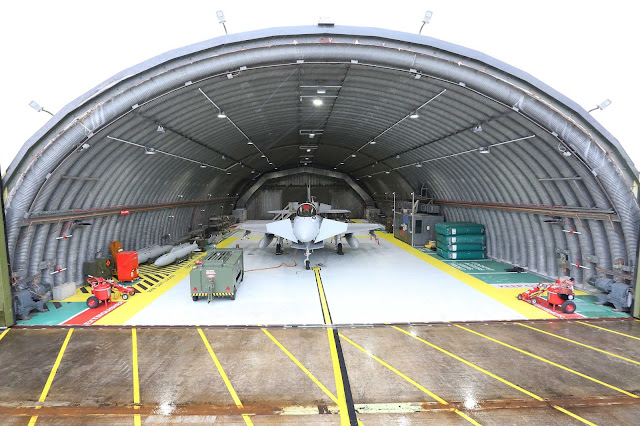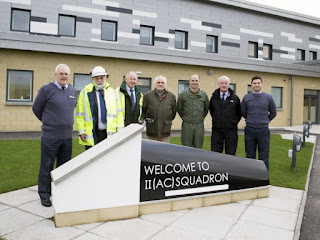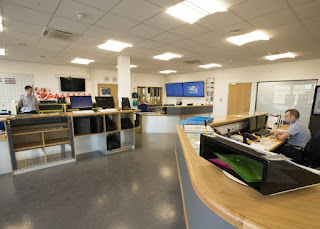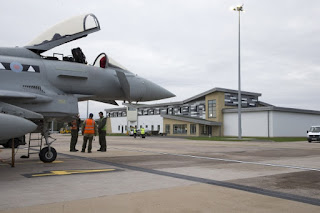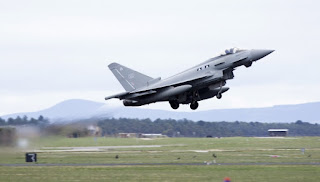TAG | led high bays
20
Chiltern Railways zaps energy binge with LED overhaul
Comments off · Posted by admin in LED
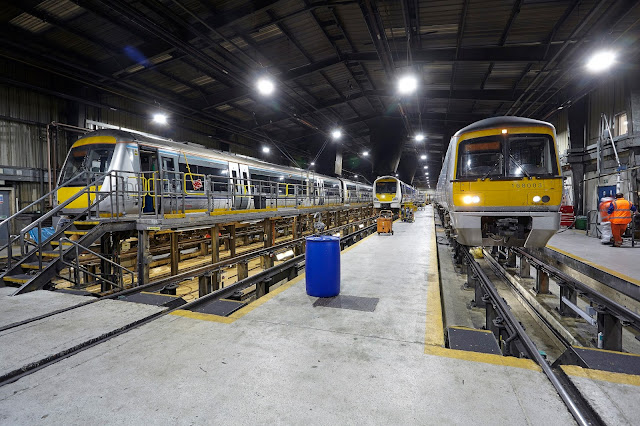
LED highbays installed at the Wembley and Aylesbury maintenance depots delivered a 67 per cent and 48 per cent saving in energy consumption respectively.
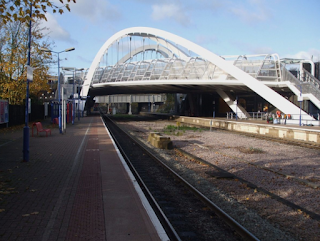
A mix of LED amenity, street and area lighting products were installed to deliver optimum illumination at Chiltern’s Wembley station.
The Arriva owned company has updated the internal and external lighting at three major stations, Wembley, Aylesbury and Stourbridge in the south of the UK.
Energy-intensive 400W highbays at the Wembley and Aylesbury maintenance depots were replaced with hooked LED highbays in a range of wattages and a sustainable, higher efficiency, longer lamp life replacement for traditional 2D bulk heads, was installed in the staff shower and toilet facilities at Wembley.
The offices on both sites were kitted out with ultra slim ceiling panels that deliver high performance and attractive LED lighting. Fluorescent tubing has also been removed and replaced with highly efficient non-corrosive LED fittings, to act as a lower energy consumption alternative.
The LED highbays installed at the Wembley and Aylesbury maintenance depots delivered a 67 per cent and 48 per cent saving in energy consumption respectively. Both sites also realised a further 64 per cent reduction in energy usage thanks to the new ceiling panels.
A mix of LED amenity, street and area lighting products were also installed to deliver optimum illumination in a number of outside areas, including pathways around and access roads to the railway tracks.
A further thirty flood lights were installed to illuminate the tracks at the Stourbridge site and another 285 replaced the legacy 40W twin CFL lights along the pathway running adjacent to the railway track at Wembley.
In all three locations, this provided Chiltern Railways with a low power, high quality LED replacement for the incumbent energy-intensive flood lighting.
Emergency lighting at Wembley which had proved to be problematic, was also upgraded.
At Stourbridge, replacing the energy-intensive legacy lighting alongside the tracks with flood lights resulted in a 62 per cent reduction in energy consumption. Furthermore Chiltern Railways will achieve an average 61 per cent reduction in CO2 emissions.
In addition, Chiltern Railways no longer has to factor in time or budget for maintenance. Chiltern Railways estimate they will benefit from a further reduction in spend of around £10,000 per annum, the amount it previously cost to maintain the lighting infrastructure.
Another benefit has been a dramatic improvement in the quality of light. The external areas are now brighter, more secure and offer safer working environment for the company’s employees.
The superior uniformity of light and improved illumination within the offices, has also been well received by Chiltern’s staff.
Visit us at www.novelenergylighting.com to explore our range of LED high bays, LED Bulkheads, and LED Floods, or call us: 0208-540-8287
chiltern railways · led bulkhead · led flood · led high bays · led lighting · LED retrofit · Novel Energy Lighting · train station lighting
27
LED helps to make RAF more environmentally friendly
Comments off · Posted by admin in LED, LED panels
Despite facing severe budget restraints, a project has been delivered that is both energy efficient and sustainable and the RAF’s decision to use LED lighting, for one of first times on a new project, played an important role.
The building has been so well received within the defence community that it has been awarded the Ministry of Defence’s prestigious Sanctuary Award for Sustainability.
RAF Lossiemouth often bears the brunt of the West’s increasingly fractious relationship with Russia, with RAF Typhoon fighters being dispatched from the base on a regular basis to intercept Russian aircraft, which often play cat and mouse with Britain’s air defences. This means the base is constantly in use.
Sustainability was put at the heart of the project and energy efficiency was key. The new building and the refurbishment of the older buildings also had to be completed in a robust fashion, so as to ensure long, low-cost use.
In order achieve these aims, LED was quickly considered and pitched.
‘There were a number compelling reasons to change the lighting in the older facilities, principally because the buildings involved are used by the squadron 24 hours a day. But like any project that involves spending public money, it had to be justified,’ commented senior project manager at the Defence Infrastructure Organisation, Jim Ellistone , who worked on the project.
The new building would have a number of uses, requiring different levels of lighting. Besides the executive and administrative offices, the new headquarters building would provide a state of the art secure facility that would be used to plan and brief complex flying operations.
The building would also accommodates the Squadron’s engineering and logistics facilities and the Survival Equipment Section, which maintains all of the high tech equipment worn by Typhoon pilots during flight.
‘Everyone involved in the process quickly recognised the benefits of new lighting, the figures showed that, due to energy savings, the project would pay for itself in just over four years,’ Ellistone added.
In defence projects, the cheapest capital option is often used, due to the budget constraints that the MoD is placed under by the government of the day, however the benefits of LED were quickly provable to authorities.
‘This was an easy change to sell and was, in many ways, like pushing on an open door. The benefits of LED are now well established and we knew that a case for the technology had to be put forward at the first planning stage,’ Ellistone commented.
The highly intricate work that RAF engineers have to carry out on the Typhoon fighters, which are some of the RAF’s newest and most agile aircraft, means that excellent light quality is required. Such is the 24-hour nature of the base, repairs could be needed any time during the the day and night.
The aircraft are stored under concrete Cold War era Hardened Aircraft Shelters (HAS), which had not been internally upgraded since the days of Ronald Reagan and Mikhail Gorbachev. Energy efficient LEDs, offering the necessary light levels were installed as replacements to older models. LEDs were also used in the lines on the base’s concrete floor, which the aircraft use as guidance when they pull forward.
‘We had to be careful when specifying fixtures for the HAS, when the jet engines run in the hangers, fumes come from the wings and rise upwards,’ Ellistone said of the work. ‘We had to make sure, in these circumstances that the lights did not melt.’
The main squadron headquarters were delivered a month early, with a saving on the original tender target price of more than £1 million.
In reviewing the project on completion, the Combined Project Delivery Team came to the conclusion that a ‘real and deep sustainability gain’ was made by ‘stepping back’ to look at the fundamentals of what they were being asked to do.
This project is an example of reasoned arguments being used to build up a case for change and then, in timely fashion, a sustainable solution being agreed and delivered on time and within budget.
Visit www.novelenergylighting.com to explore our range of office and warehouse LED lighting, or call us today: 0208-540-8287
led hanger lighting · led high bays · led lighting · led office lighting · led panels · led tubes · led warehouse lighting · Novel Energy Lighting
18
Design Clinic: Three ways to control light in a warehouse
Comments off · Posted by admin in LED
Credit: Alan Tulla, Lux Technical Editor:
Almost by definition, a warehouse is a large area. If there are people working in there (it is an if – some warehouses are fully automated) then it must be illuminated to a decent level. This means the energy consumption can end up being high, unless you do something about it.
In essence, there are two types of warehouse: those with racking and those without. This will determine the lighting layout and the controls to use. Some are large open areas where goods, often on pallets, are stored no more than, say, 1.5m high. It’s a good idea when designing the lighting to install more, lower wattage luminaires with a wide light distribution. They are installed closer together to minimise shadowing and give good vertical illumination.
The other type of warehouse, which is very common, uses racking, often to a high level, maybe 6-10m.
Our warehouse uses a combination of both. On the subject of storage areas, EN 12464 says that a continuously occupied space where little perception of detail is required should be lit to 200 lx. Manned gangways/aisles should be lit to 150 lx. The vertical illuminance on the racks should also be 200 lx.
To get the greatest benefit from a control system, you must know how the warehouse is used. How long do staff stay in certain areas? Do they cluster in one spot? How much movement is there in the aisles? If you don’t ask these questions, you won’t achieve the best result.
One of the biggest savings to be made is in unoccupied aisles. I went to a distribution centre for a major wholesaler that had literally dozens of aisles. These aisles were a good 30m long, maybe more than 40m. However, at any one time, only about a quarter of the aisles were occupied.
These guys knew their controls and had installed movement detectors at the ends and along the aisles. When the aisle was empty, the luminaires dimmed to 10 per cent. As soon as someone entered, the luminaires switched to full brightness giving 200 lux both horizontally and vertically. They had further refined the technique, and achieved greater savings, by switching on only those luminaires in the vicinity of the person picking the goods. Further down the aisle, and behind, the luminaires were dimmed.

Ex-Or’s QuickSet Pro setup device
Outside the aisles, savings can be made by zoning so that only the occupied areas are illuminated to full output. But beware, switching off totally can make a place look gloomy and desolate; it might even be a health and safety hazard. It’s much better to dim to 50 or 25 per cent.
If you have ever done a Leni calculation, you will know that it includes a figure for the quiescent power load of the sensors. This is also known as the parasitic load. The Ex-Or unit used here has a low rating of 150mW.
One final point that needs to be mentioned is ease of setup. With some other suppliers, commissioning can be a pain and may even require an outside specialist. Ex-Or has devoted a lot of effort developing its QuickSet Pro handheld setup controller.
Our warehouse is 25 x 50m and 14m to the apex. It is lit to 200 lux using three different types of luminaire.

This gives a general view of the whole warehouse fully lit. Like many warehouses, several types of luminaire are used. Above the tall aisles, the luminaires have a narrow oval shape that distributes the light along the aisles but minimises it in the other axis to avoid hot spots. These can be fitted with individual LightSpot HD sensors to track movement along the aisle. Alternatively, you can group the sensors. They can be controlled by Dali or DSI signals. At the ends, a mask can be fitted on the sensor so movement in the open area doesn’t trigger the aisle lights.
In the open area, mounted at the same height, are high bays with a symmetrical distribution. It’s worth noting that the Ex-Or sensor is available for different mounting heights from 2.5-16m.
Finally, there is a low level section which is used for heavy goods or which have hard-to-read labels.

Controls can sometimes be difficult to illustrate in a static picture. If the lights were switched off, you would see nothing. This option uses PIR controls so the luminaires only operate when people are using the aisles.
Here, the tall aisles have been switched off because no-one is using them. The low area in the foreground is at full brightness. This is switched by the standard HD sensor. This covers an area approximately 10m in diameter. Ex-Or is proud of the optics in its products and this unit will detect large movement at the edges of the area – when someone enters the space, for example – but the central area, about 7m in diameter, will detect small movements such as staff entering data into a notepad. The HD unit contains 155 detection points, three times as many as some on the market.
The foreground open area is at 100 per cent because it is still in use, but it would be worth zoning those luminaires at the edges, especially in a larger warehouse.
Installed sensor seen from below
Tech spec
Control type Single PIR
Arrangement Mounted centrally
Energy saving Can be significant with intermittent use

This is the night shift. Only a few staff are working. There is no activity in the foreground and so the luminaires are dimmed to 10 per cent. This saves energy but also means there is some illumination for safety reasons and to give the staff a feeling of security. Elsewhere, the luminaires are off or at 10 per cent.
The luminaires are at 100 per cent all along the working aisle because the angle of the detector high up picks up all the movement. A useful feature of the LightSpot HD detector is that you can link a master detector to three bus sensors. Look for QuickLink in the literature. This means that data such as occupancy and light levels can be shared across the sensors.
Each detector has its own memory chip that contains particular settings such as illumination level, timing and switching frequency. These settings can be altered from ground level using the QuickSet Pro controller. This controller can also download the recorded data and then upload it to a computer or energy management software.
PIR sensor unit showing Dali and digital connections
Tech spec
Control type High-level PIR
Arrangement Master plus bus sensor
Energy saving The greatest savings come from switching off what isn’t needed
Visit www.novelenergylighting.com to explore our range of LED High Bays, occupancy sensors, and controls. Please give us a call to discuss your project needs: Tel. 0208-540-8287, or email us: sales@novelenergylighting.com. We stock a wide range of LED highbays, including Philips Coreline highbay, GE Albeo highbay, MEGE LED Linear Highbays, and YYC LED Highbays
ge led · honeywell led · led hibay · led high bays · led highbay · led warehouse · mege led · Novel Energy Lighting · philips coreline highbay · warehouse lighting · yyc led
10
Virgin Trains: LED lighting at stations
Comments off · Posted by admin in LED, LED downlights, LED Floodlights, LED Tubes
Virgin Trains: LED lighting at stations is as much about customer satisfaction as it is about energy

Novel Energy Lighting works with network rail and other rail contractors. See out Linear High Bay solutions for platforms here.
led high bays · LED lamps · led lighting · led tubes · Novel Energy Lighting · platform lighting · railway lighting

